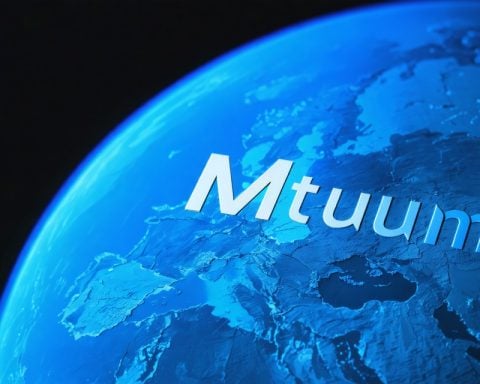- The H3 rocket has successfully launched the Michibiki 6 satellite, enhancing Japan’s GPS capabilities.
- Michibiki 6, weighing 1,900 kg, is positioned 35,786 km above the equator to improve navigation accuracy.
- The H3 rocket can adapt to various payloads, showcasing versatility in its design.
- Despite initial setbacks, the H3’s recent successes reflect Japan’s resilience and innovation in aerospace.
- This launch demonstrates Japan’s ambitions in the global commercial launch market and future space missions.
- Future missions, including international collaborations, signal Japan’s ongoing commitment to space exploration.
In a spectacular display of engineering and ambition, Japan’s H3 rocket rocketed into the skies, successfully delivering the Michibiki 6 navigation satellite into orbit. Launching from the Tanegashima Space Center at 3:30 a.m. Eastern time, this mission marks a significant leap in Japan’s quest for enhanced regional GPS capabilities.
Weighing in at 1,900 kilograms, the Michibiki 6 satellite, also known as QZS-6, is a vital addition to Japan’s navigation system. Positioned 35,786 kilometers above the equator at 90.5 degrees East, this satellite aims to refine positioning, navigation, and timing services across the region, promising increased accuracy and reliability.
The H3 rocket, stretching an impressive 63 meters, comes in various configurations to suit diverse payload needs, including options with solid rocket boosters. Despite facing setbacks, including a dramatic second-stage engine failure during its inaugural launch, the H3 has swiftly rebounded with successive successful missions, including a recent launch of the Kirameki 3 communications satellite.
This launch underscores Japan’s commitment to not only improving its own navigation services but also competing on the global commercial launch market. With plans for further missions, including a significant asteroid mission for the United Arab Emirates in 2028, the H3 is poised to play a crucial role in the future of space exploration.
As Japan embraces this new chapter in aerospace, the recent successes highlight the nation’s innovative spirit and dedication to technological advancement. The takeaway? Japan’s H3 rocket is not just a launch vehicle; it’s a powerful symbol of progress and ambition in the realm of space technology.
Blast Off to the Future: Japan’s H3 Rocket Takes Center Stage!
Overview of Japan’s H3 Rocket and Michibiki 6 Satellite
Japan’s H3 rocket has made headlines with its successful launch of the Michibiki 6 navigation satellite. This mission, which occurred on March 7, 2023, is a testament to Japan’s impressive engineering capabilities and its commitment to enhancing global navigation systems. The Michibiki 6 satellite will provide crucial improvements in positioning, navigation, and timing services, strengthening Japan’s contributions to regional GPS capabilities.
Key Features of the H3 Rocket
The H3 rocket, measuring 63 meters in height, features advanced technology to ensure reliable satellite deployment. It has multiple configuration options, allowing adaptation for different payloads, including the use of solid rocket boosters for enhanced performance. Following its initial setbacks, including an early-stage engine failure, the H3 program has successfully completed subsequent missions, including the launch of commercial satellites.
Market Forecasts and Trends
Japan’s H3 rocket is set to play an integral role in the space launch market. With an estimated market size projected to reach $20 billion by 2025, Japan is not only focusing on national objectives but also on competing with international players in the commercial launch sector. The H3’s capabilities make it an attractive option for various global clients seeking reliable satellite launch services.
Insights into Michibiki 6’s Contributions
The Michibiki 6 satellite weighs 1,900 kilograms and is positioned in geostationary orbit at 35,786 kilometers above the equator. Its deployment marks a key step in expanding Japan’s Quasi-Zenith Satellite System (QZSS), which enhances GPS accuracy for users across Japan and surrounding regions. This endeavor will significantly aid multiple industries, including agriculture, transportation, and telecommunications, by providing more precise location data.
Pricing and Availability
While specific pricing for H3 launches has not been publicly disclosed, it is widely anticipated to remain competitive within the market. With increasing demand for satellite launches, especially from emerging markets, the H3 rocket is poised to capture a substantial share of the commercial launch industry.
Use Cases and Applications
– Transportation: Enhanced navigation for autonomous vehicles and ships.
– Telecommunication: Improved reliability of GPS-based services and applications.
– Disaster Management: Better positioning systems to assist in emergency response efforts during natural disasters.
Innovations in Space Technology
Japan’s ongoing advancements, particularly with the H3 rocket and Michibiki 6 satellite, illustrate the innovative technologies being developed. This includes cutting-edge propulsion systems and engineering techniques, positioning Japan at the forefront of space exploration.
Answering Key Questions
1. What makes the H3 rocket different from previous models?
The H3 rocket features flexible configurations to accommodate various payloads, and it incorporates advanced engine technology to enhance reliability and efficiency, making it a versatile choice for a range of launch missions.
2. How does the Michibiki 6 satellite enhance GPS capabilities?
The Michibiki 6 satellite improves the accuracy and reliability of navigation services in Japan and the surrounding region, facilitating better positioning for many applications, from transportation to personal navigation.
3. What future missions are planned for the H3 rocket?
Future missions for the H3 rocket include scientific endeavors, such as a significant asteroid exploration mission for the United Arab Emirates planned for 2028, along with continued support for commercial satellite launches.
For more information on Japan’s space exploration efforts, visit JAXA for updates and insights.









